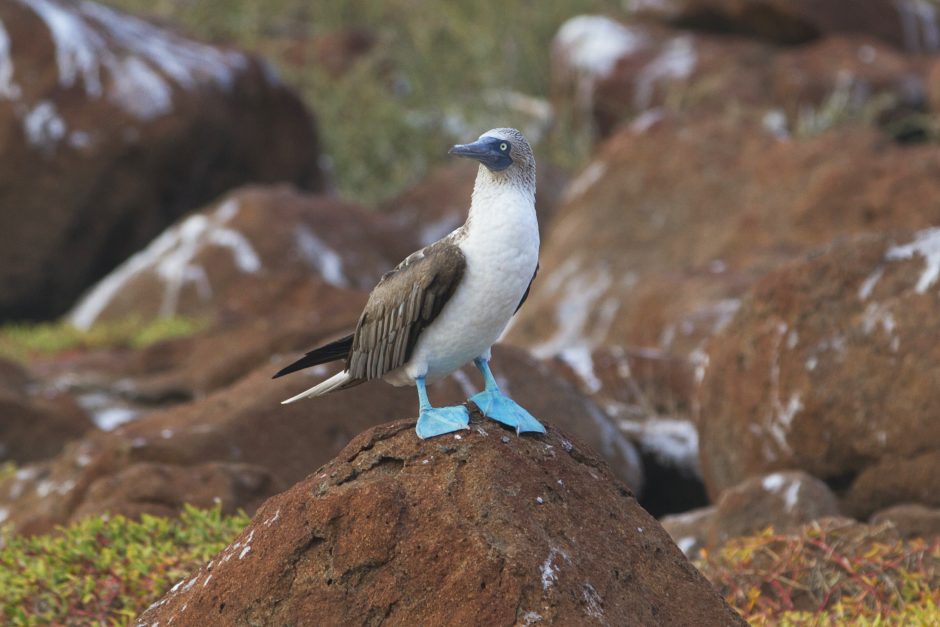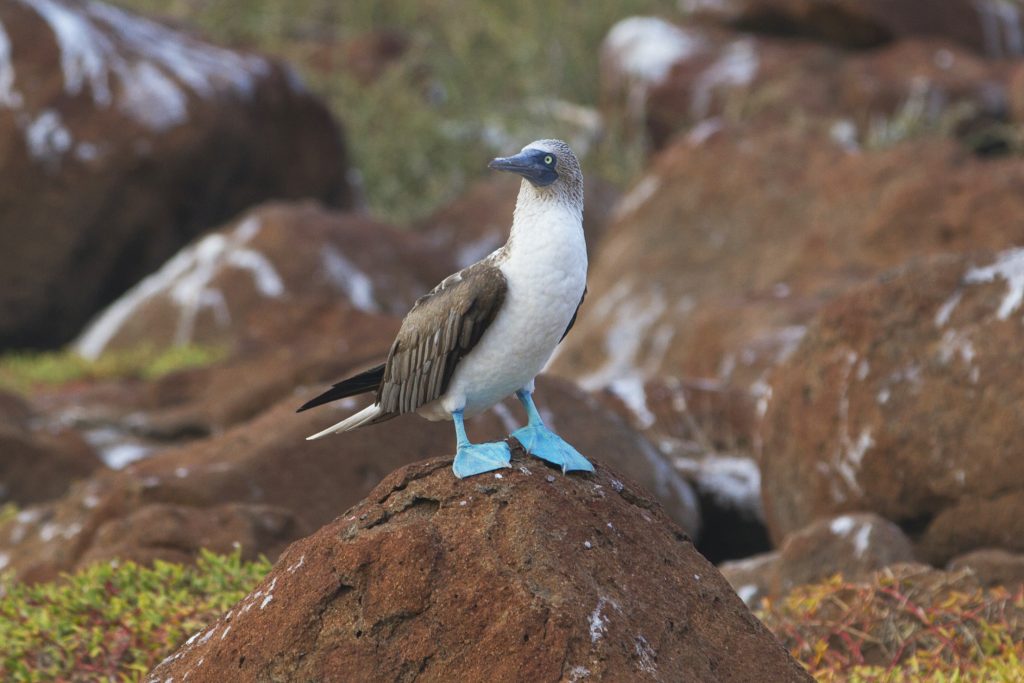
How to get this shot: Blue-Footed Booby in Galapagos
The wildlife of Galapagos is extraordinary for so many reasons. Not only are most inhabitants found nowhere else on earth, the vast majority of animals have no natural fear of humans. This makes for some of the very best nature photography you could ask for!
Whether you’re headed to Galapagos shortly, or simply dreaming of the day you get to set foot on The Enchanted Isles, start practicing now to get some of the most coveted shots of this most unique chain of volcanic islands.

- First, you of course need to get you to a place that has said Blue-footed Booby posing perfectly. There are many vessels and outfits out there to do so, and of course I prefer the smaller, more intimate boats and photography-specific voyages like those of Natural Habitat Adventures.
- Next, you will want to have the right gear. While any camera will do, it will take something slightly more advanced to get you this look, where the bird is in tack-sharp focus but the background is nicely blurred.
- My preferred setup for Galapagos Islands wildlife is a DSLR or mirrorless camera with the venerable 70-200mm f/2.8 lens. This is my workhorse for most of my photos in Galapagos, and is ideal for photographing the Blue-footed Boobies.
- Your camera settings will be key. The trick to getting that nice balance of a blurred background that can still be made out to be textured, colorful rocks. For this, I’m aiming for something like an f/4 aperture, plus or minus. See, if you go for the f/2.8, which is tempting you will lose considerably more definition in the background. You may like that, so experiment! However, for this shot specifically, I’m at f/4, 1/250 sec, and iso200. (fortunately most photography is in nice daylight, so there is plentiful light)
- The next step is to determine your composition. Do you want to adhere to the rule of thirds or other compositional rules like leading lines, Fibonacci spiral? Or do you want to break the rules for a particular reason. For me, in this shot, I ended up shooting a little bit wider than you’d think in order to then crop in after the fact for the composition I wanted. Then, when cropping, I did indeed choose to break the rules by putting the subject smack dab in the middle to exaggerate emphasis on the bird itself. The bird is a colorful, charismatic denizen in a relatively uniform, slightly inhospitable landscape. Thus, I thought it best to really make it front and center…literally. There are many other compositional styles you could go for, so the main message is be sure you can justify it to yourself, as that’s where the true artistry comes in!
- Finally, you’re ready for the shot. Be patient and take many. Wait for the bird to take different looks around…perhaps if its head is at the right angle, you’ll get a little catch light as the sun reflects from its gaze. Or perhaps it will look off into the distance, or directly at you. One of my favorite poses is when the males are doing their little mating dance and you snap a photo as the bird has one foot in the air–it’s fantastic! The point is, take many “experimental” shots and be patient for an interesting or particularly intriguing pose.
As I hope you’ll see, the Galapagos is FILLED with interesting scenes, animals, and photo opportunities, like this one. These lessons of course are directed to “get you this shot” but can also be of great use with other wildlife portraiture in similar conditions (even other places around the world!).
I wish you the best on your upcoming or eventual journey in the Galapagos Islands!
Be well,

Court
2 Comments

Tom
January 4, 2023 at 2:02 pm

Court Whelan, Ph.D.
January 6, 2023 at 1:10 pm
I’m interested in doing a Galapagos cruise. I would like to plan my trip with a stop at North Seymour. I would like to be able to time the trip so that I would have an opportunity to see the Blue Footed Boobies doing their mating dance. I have researched the timeframes and there is information regarding this mating dance that is all over the place. I know Mother Nature and Wildlife are not like a scheduled train schedule. What would be the optimal 2 months’ timeframe to see this wonderful and bucket list dance? Thanks, Tom.
Hi Tom, glad to hear all this! I would highly recommend checking out Natural Habitat Adventures’ small ship adventures in the Galapagos. As far as optimal time, it’s interesting as the Galapagos has a lot of asynchronous behaviors among animals. That is, the same species on different islands may do different things at different times of year. Thus, I’ve seen the blue-footed boobies doing their mating dance at various times of year. However, the June – Aug time is when this is most commonly seen. That’s probably what I’d aim for if it’s a key part of the trip for you. Enjoy it!!